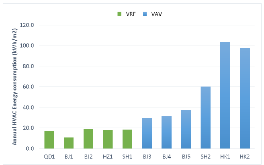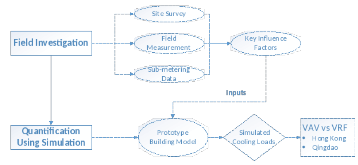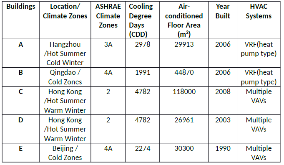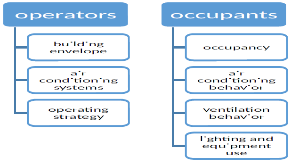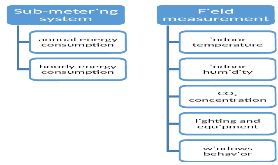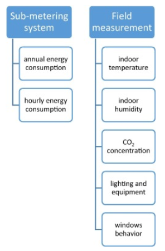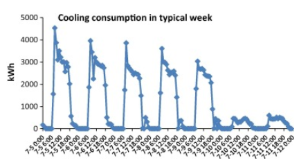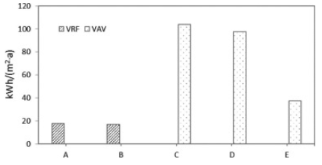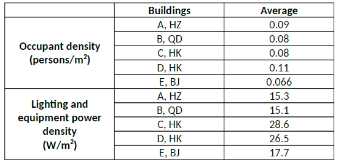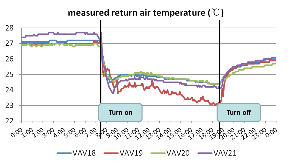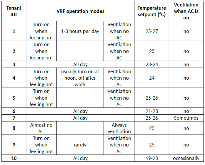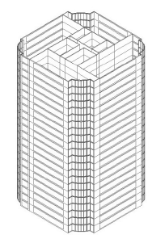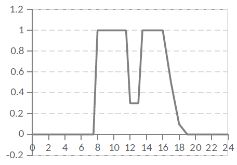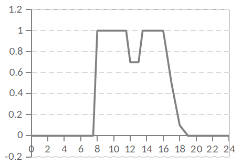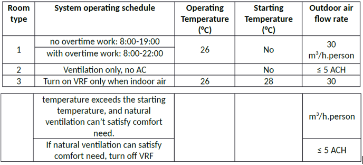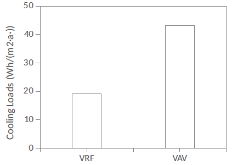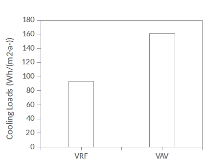Comparative study of the cooling energy performance of variable refrigerant flow systems and variable air volume systems in office buildings
- Tsinghua Univ., Beijing (China)
- Lawrence Berkeley National Lab. (LBNL), Berkeley, CA (United States)
- Beijing Inst. of Architectural Design, Beijing (China)
Variable air volume (VAV) and variable refrigerant flow (VRF) systems are widely used in office buildings. This study investigated VAV and VRF systems in five typical office buildings in China, and compared their cooling energy use. Site survey and field measurements were conducted to collect the data of building characteristics and operation. Measured cooling electricity use was collected from sub-metering in the five buildings. The sub-metering data normalized by climate and operating hours indicated that the cooling energy consumed by VRF systems was up to 70% lower than that consumed by VAV systems. This was mainly because of the different operation modes of both system types that led to significantly fewer operating hours for the VRF systems. Building simulations were used to quantify the impact of operation modes of VRF and VAV systems on cooling loads. A prototype office building in China was used as the model. The simulation results showed that the VRF operation mode required much lower cooling load when compared to the VAV operation mode. For example, the cooling loads decreased by 42% in Hong Kong and 53% in Qingdao. Key findings include the following: the VRF systems operated in the part-time-part-space mode enabling occupants to turn on the air-conditioning only when needed and when the spaces were occupied. However, the VAV systems operated in the full-time-full-space mode limiting occupants’ control of operation. These findings provide insights into VRF systems operation and controls as well as their energy performance, which could help guide HVAC designers on system selection and building operators or facility managers on system operations to achieve low- or zero-net energy buildings.
- Research Organization:
- Lawrence Berkeley National Laboratory (LBNL), Berkeley, CA (United States)
- Sponsoring Organization:
- USDOE Office of Energy Efficiency and Renewable Energy (EERE)
- Grant/Contract Number:
- AC02-05CH11231
- OSTI ID:
- 1532210
- Alternate ID(s):
- OSTI ID: 1396996
- Journal Information:
- Applied Energy, Vol. 183, Issue C; ISSN 0306-2619
- Publisher:
- ElsevierCopyright Statement
- Country of Publication:
- United States
- Language:
- English
Web of Science
Similar Records
End-Use Savings Shapes Measure Documentation: Variable Refrigerant Flow with Heat Recovery and Dedicated Outdoor Air System
Using Field-Metered Data to Quantify Annual Energy Use of Portable Air Conditioners
